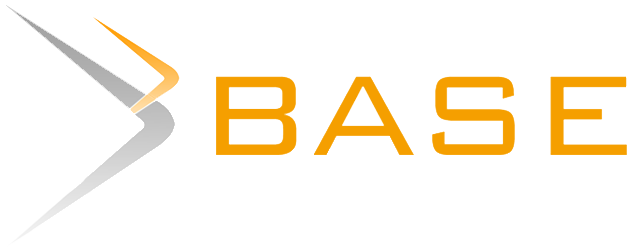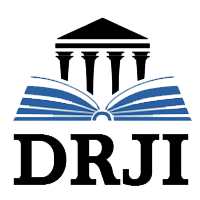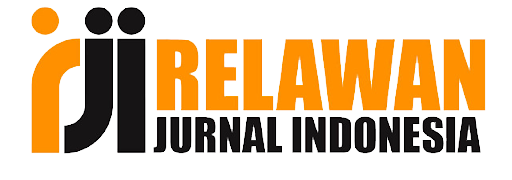Pengaruh Visual Art Therapy dalam Menurunkan Post Traumatic Stress Disorder pada Mahasiswa
Abstract
Abstract research was conducted based on the phenomenon of traumatic and emotional management conditions that were not good for college students. This study aims to determine the effect of visual art therapy on reducing post traumatic stress disorder in college students. The method used in this research is an experimental method with a quasi-experimental design using one group pretest-posttest. The subjects in the study were 15 college students consisting of 5 boys and 10 girls. The technique of determining purposive sampling subjects. This research was conducted in 3 stages, namely the pretest, experiment, and posttest stages. The data collection technique in this study used the PTSD PCL-5 psychological measuring instrument scale. The data analysis technique used in this study is Paired Samples T-Test. The results showed that the coefficient is different with t = 4. 333 with p = 0.001, so it can be concluded that there is a very significant difference in post traumatic stress disorder before and after performing visual art therapy intervention in college students.
Penelitian ini dilakukan berdasarkan fenomena kondisi pengelolaan traumatik dan emosi yang kurang baik pada mahasiswa. Penelitian ini bertujuan untuk mengetahui adanya pengaruh visual art therapy untuk menurunnya post traumatic stress disorder pada mahasiswa. Metode yang digunakan dalam penelitian ini adalah metode ekperimen dengan quasi experimental design menggunakan one group pretest-posttest. Subjek dalam penelitian adalah mahasiswa sejumlah 15 yang terdiri dari 5 laki-laki dan 10 perempuan. Teknik penentuan subjek purposive sampling. Penelitian ini dilakukan dalam 3 tahapan yaitu tahap pretest, eksperimen, dan posttest. Teknik pengumpulan data dalam penelitian ini menggunakan skala alat ukur psikologi PTSD PCL-5 . Teknik analisis data yang digunakan dalam penelitian ini adalah uji Paired Samples T-Test. Hasil penelitian menunjukkan bahwa koefisien beda dengan t = 4,333 dengan p = 0,001 maka dapat disimpulkan bahwa ada perbedaan post traumatic stress disorder yang sangat signifikan sebelum dengan sesudah melakukan intervensi visual art therapy pada mahasiswa
Keywords
Full Text:
PDFReferences
Agnafors, S., Barmark, M., & Sydsjo, G. (2021). Mental health and academic performance: A study on selection and causation effects from childhood to early adulthood. Social Psychiatry and Psychiatric Epidemiology, 56 (5), 875-866. https://doi.org/10.1007/s00127-020-01934-5
American Art Therapy Association. (2017, Juni 01). About art therapy. http://www.arttherapy.org
American Psychiatric Association. (2013). Diagnostic and statistical manual of mental disorders fifth edition DSM-5. American Psychiatric Publishing.
Angelidis, A., Solis, E., Lautenbach, F., van der Does, W., & Putman, P. (2019). I’m going to fail! Acute cognitive performance anxiety increases threat-interference and impairs WM performance. PLoS ONE, 14(2), 1-25. https://doi.org/10.1371/journal.pone.0210824
Arikunto, S. (2010). Prosedur penelitian suatu pendekatan praktik. Rineka Cipta.
Ashofa, N. H. (2019). Terapi realitas untuk menangani trauma (post traumatic stress disorder) pada korban bullying di balai perlindungan dan rehabilitas sosial wanita Yogyakarta. Hisbah: Jurnal Bimbingan Konseling dan Dakwah Islam, 16(1), 86-99. https://doi.org/10.14421/hisbah.2019.161-07
Auerbach, R. P., Mortier, P., Bruffaerts, R., Alonso, J., Benjet, C., Cujipers, P., Demyttenaere, K., Ebert, D. D., Green, J. G., Hasking, P., Murray, E., Nock, M. K., Pinder-Ameker, S., Sampson, N. A., Stein, D. J., Vilagut, G., Zaslavsky, A. M., & Kessler, R. C. (2018). WHO world mental health surveys international college student project: Prevalence and distribution of mental disorders. Journal of Abnormal Psychology, 127(7), 623–638. https://doi.org/10.1037/abn0000362
Avrahami, D. (2005). Visual art therapy’s unique contribution in the treatment of posttraumatic stress disorders. Journal of Trauma and Dissociation, 6(4), 5-38.
Bollou, M. B., ed. (1995). Psychological Interventions: A guide to strategies. Greenwood Publishing Group.
Bullman, T. A., & Kang, H. K. (1994). Post traumatic stress disorder and the risk of traumatic deaths among Vietnam veterans. Journal of Nervous and Mental Disease, 182(11), 604–610. https://doi.org/10.1097/00005053-199411000-00002
Cohen, L., Manion, L. And Morrison, K. (2007). Research methods in education, (6th ed.). Routledge.
Desyanti., & Muzdalifah, F. (2021). Kesehatan mental mahasiswa ditinjau dari two continua model: Pengujian multiple analysis of variance. Persona: Jurnal Psikologi Indonesia, 10(1), 147-166. https://doi.org/10.30996/persona.v10i1.4660
Dewi, Sari. (2012). Buku ajar kesehatan mental. UPT UNDIP Press Semarang.
Ehlers, A., Hackmann, A., & Michael, T. (2004). Intrusive re-experiencing in posttraumatic stress disorder: Phenomenology, theory, and therapy. Memory, 12, 403-415. https://doi.org/10.1080/ 09658210444000025
Ehlers, A., Wild, J., Warnock-Parkes, E., Grey, N., Murray, H., Kerr, A., & Clark, D. M. (2020). A randomized controlled trial of therapist-assisted online psychological therapies for post traumatic stress disorder (STOP-PTSD): Trial protocol. Trials, 21(1), 355.
Everly, G. S., & Lating, J. M. (2002). A clinical guide to the treatment of the human stress response (2nd ed.). Plenum Publishing.
Foa, E. B., Keane, T. M., Friedman, M. J., & Cohen, J., & Cohen, J. A. (2009). Effective treatments for PTSD: Practice guidelines from the international society for traumatic stress studies (2nd ed.). Guilford Press.
Hartaji, R. D. A. (2012). Motivasi berprestasi pada mahasiswa yang berkuliah dengan jurusan pilihan orang tua. Gaung Persada Press.
Holt, E., & Kaiser, D. H. (2009). The first step series: Art therapy for early substance abuse treatment. The Arts in Psychotherapy, 36(4), 245-250. https://doi.org/10.1016/j.aip.2009.05.004
Hulukati, W., & Djibran, M. R. (2018). Analisis tugas perkembangan mahasiswa Fakultas Ilmu Pendidikan Universitas Negeri Gorontalo. Jurnal Bikotetik, 2(1), 73-114.
Kirkpatrick, Heather, & Heller, Grant. (2014). Post traumatic stress disorder: Theory and treatment update. International Journal of Psychiatry in Medicine, 47(4), 337-346. https//doi.org/10.2190/PM.47.4h
Malchiodi, C. A. (1999). Medical children art therapy. Jessica Kingsley.
Malchiodi, C. A. (2003). Handook of art therapy. The Guilford Press.
Malchiodi, C. A. (2007). The art therapy sourcebook. McGraw-Hill.
May, R. (1980). Psychology and the human dilemma. W W Norton & Co.
Oltmanns, T. F., & Emery, R. E. (2019). Abnormal psychology (9th ed.). Pearson.
Pamelia, E. M. (2015). Therapeutic art-making and art therapy: Similarities and differences and a resulting framework [Tesis, Indiana University]. ScholarWorks IUPUI. https://hdl.handle.net/1805/6900
Radiani, W. A. (2019). Kesehatan mental masa kini dan penanganan gangguannya secara islami. Journal of Islamic and Law Studies, 3(1), 87-113.
Rizkya., Purwono., & Abidin. (2020). Efektivitas person-centered art therapy untuk mengurangi simtom Post Traumatic Stress Disorder (PTSD) pada penyintas bencana gempa bumi di Lombok. Jurnal Psikologi Sains & Profesi, 4(2), 106-115. https://doi.org/10.24198/jpsp.v4i2.24930
Sadock, B. J., & Sadock, V. A. (2004). Kaplan & Sadock, buku ajar psikiatri. EGC.
Sadock, B.J., & Sadock, V. A. (2007). Kaplan and sadock’s synopsis of psychiatry: Behavioral sciences/clinical psychiatry (10th ed.). Lippincott Williams & Wilkins.
Safaria, T., & Ekasaputra, N. (2009). Manajemen emosi sebuah panduan cerdas bagaimana mengelola emosi positif dalam hidup anda. Bukti Aksara.
Schouten, K. A., De Niet, G. J., Knipscheer, J. W., Kleber, R. J., & Hutschemaekers, G. J. M. (2015). The effectiveness of art therapy in the treatment of traumatized adults: A systematic review on art therapy and trauma. Trauma, Violence and Abuse, 16(2), 220-228. https://doi:10.1177/1524838014555032
Schouten, K. A., van Hooren, S., Knipscheer, J., & Hutschemaekers, G. J. M. (2019). Trauma-focused art therapy in the treatment of posttraumatic stress disorder: A pilot study. Journal of Trauma & Dissociation, 20(1), 114-130. https://doi.org/10.1080/15299732.2018.1502712.
Sugiyono. (2016). Metode penelitian kuantitatif, kualitatif, R&D. IKAPI.
Sugiyono. (2019). Metode penelitian kuatitatif. Alfabeta.
Tang, B., Deng, Q., Glik, D., Dong, J., & Zhang, L. (2017). A meta-analysis of risk factors for Post Traumatic Stress Disorder (PTSD) in adults and children after earthquakes. International Journal of Environmental Research and Public Health, 17(12), 1-20. https://doi.org/10.3390/ijerph14121537
Weathers, F. W., Litz, B. T., Herman, D. S., Huska, J. A., & Keane, T. M. (October 1993). The PTSD Checklist (PCL): Reliability, validity, and diagnostic utility. Annual Convention of the International Society for Traumatic Stress Studies, San Antonio, TX, 462.
World Health Organization. (2013). Mental health action plan 2013-2020. WHO Library Cataloguing in Publication Data. https://apps.who.int/iris/bitstream/10665/89966/1/9789241506021_eng.pdf?ua=1
Zakiah, Ernita. (2019). Behavior Activation (BA) untuk menurunkan gangguan depresi pada mahasiswa Universitas Negeri Jakarta. Jurnal Penelitian dan Pengukuran Psikologi, 8(2). https://doi.org/10.21009/JPPP.082.07
DOI: https://doi.org/10.24176/perseptual.v8i1.10334
Refbacks
- There are currently no refbacks.

Jurnal Psikologi Perseptual (eISSN 2580-9520) is licensed under a Creative Commons Attribution-ShareAlike 4.0 International License














